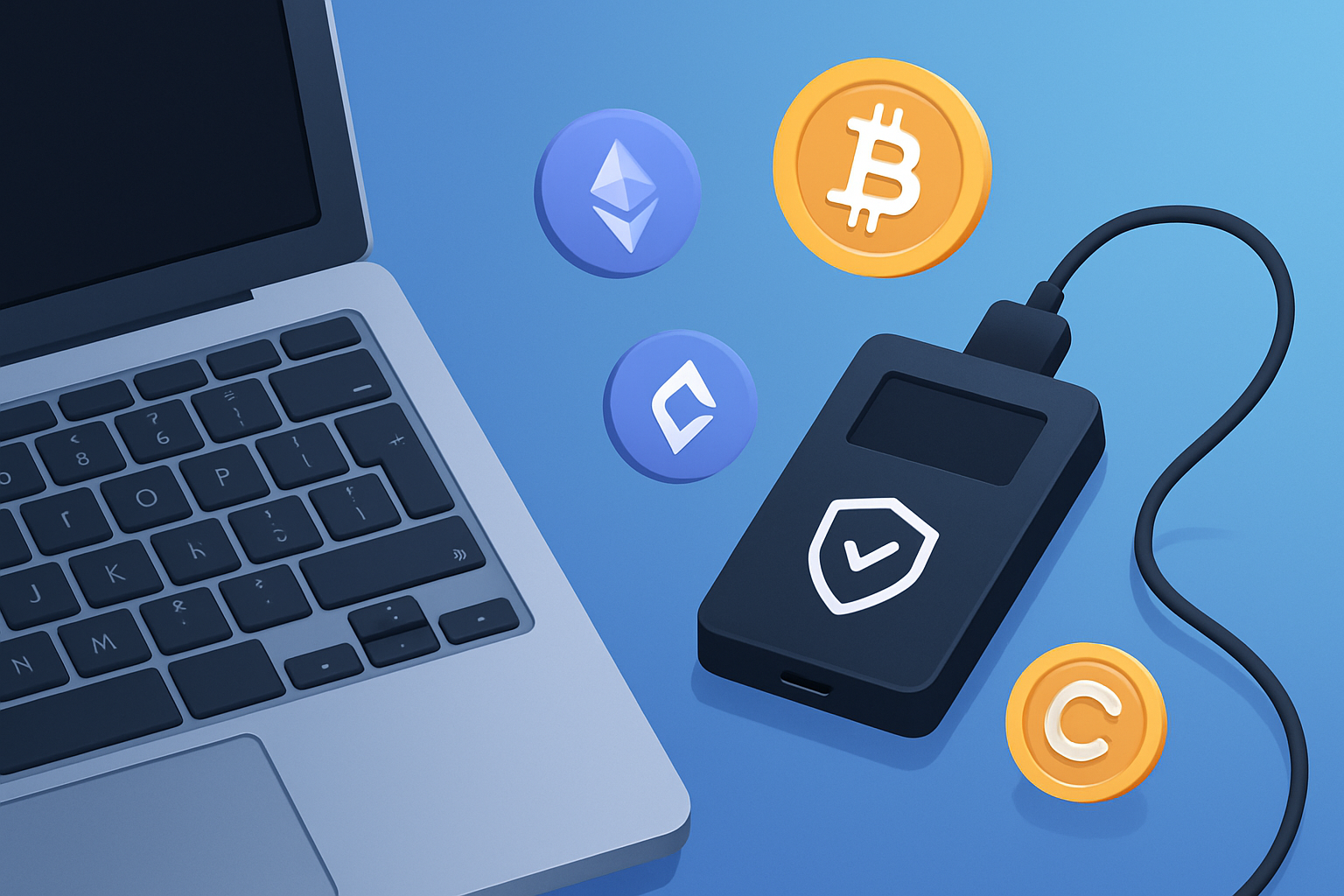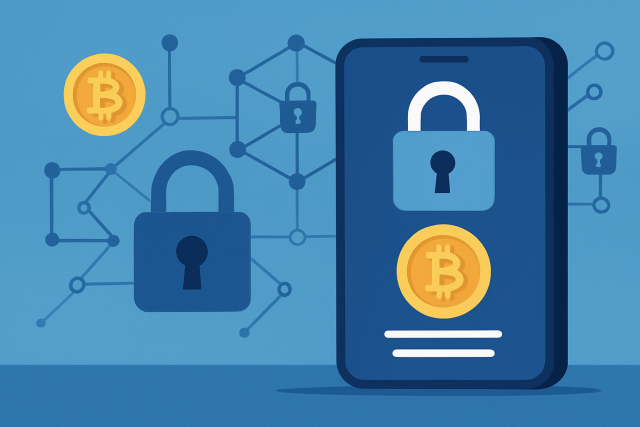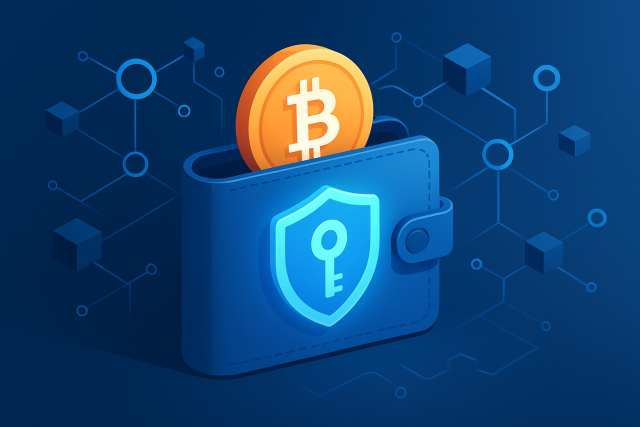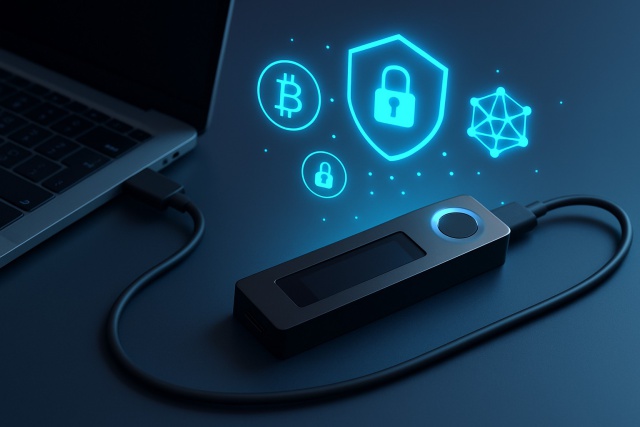Crypto Hardware Wallets Explained With Easy Steps


If you are just dipping your toes into the world of cryptocurrency, keeping your digital assets safe is absolutely important. Crypto hardware wallets offer a trusty way to stash your currency offline, giving you that added peace of mind by lowering the chances of theft or hacks sneaking in.
What Exactly Are Crypto Hardware Wallets Anyway
Crypto hardware wallets are nifty little physical devices designed to stash your cryptocurrency private keys offline and shield them from nasty online threats. Unlike software wallets on your phone or computer, hardware wallets provide a sturdier and safer way to manage your digital assets by keeping those keys locked in a secure tamper-resistant fortress.
- Keep your private keys offline to greatly cut down the chances of falling prey to hackers.
- Offer solid security features like PIN codes and encryption that really pull their weight.
- Stand guard against malware and phishing schemes and those pesky remote cyber threats lurking around.
- Let users juggle multiple cryptocurrencies on a single device to make life simpler and less of a headache.

Why Choose a Hardware Wallet? The Benefits You Should Really Know About
Hardware wallets offer a level of security that far outshines software wallets or exchanges, mainly because they keep your private keys offline where hackers cannot easily reach them. This setup means you stay firmly in the driver’s seat when it comes to your funds, significantly cutting down the risk of theft or those dreaded hacks.
- Provides solid protection against the malware and phishing scams that love to target software wallets.
- Allows you to sign transactions safely offline, keeping your keys locked up tight and far from prying eyes.
- Small and easy to carry around, yet packs a serious punch when it comes to security.
- Perfect for stashing your cryptocurrency safely for the long haul, without relying on any third parties.
The Not-So-Obvious Risks and Limitations of Crypto Hardware Wallets
Hardware wallets do a great job of boosting security but aren’t completely foolproof. If the device gets damaged or goes missing or you fumble during setup or lose track of your recovery seed you might lock yourself out of your funds for good. Many wallets play favorites and only work with certain cryptocurrencies which can feel a bit limiting.
- You could lose access to your crypto, a tough pill to swallow for sure.
- You staring at a locked device feeling a bit helpless as I’ve found more than once.
- Keep your guard up.
- Which might cramp your style when it comes to diversifying your holdings.
- You are usually out of luck when it comes to recovering your funds. Many have learned this bitter lesson the hard way.
Picking the Right Crypto Hardware Wallet A Friendly Guide
When picking out your first hardware wallet, mull over a few key things like the device’s reputation and the range of cryptocurrencies it can handle. Consider how user-friendly it really is, the price tag, and the kind of customer support you can count on.
| Wallet Model | Supported Cryptocurrencies | Price Range | Ease of Use | Security Features |
|---|---|---|---|---|
| Ledger Nano S Plus | Over 1800 coins including the big hitters BTC and ETH | $79 - $99 | Moderate | PIN code, secure element, passphrase |
| Trezor Model T | Supports more than 1600 coins, including all your favorites BTC and ETH | $169 - $200 | Easy | PIN, passphrase, open-source firmware |
| Ledger Nano X | Supports 1800+ coins and even throws in Bluetooth for convenience | $139 - $160 | Easy | PIN, secure chip, Bluetooth support |
| KeepKey | Supports 40+ coins with a easy-to-use interface that’s a breeze to navigate | $49 - $79 | Easy | PIN, recovery flow, firmware updates |
| BitBox02 | Supports 1500+ coins, sporting a compact design that fits nicely in your hand | $119 - $139 | Easy | PIN, passphrase, multisig support |
Step-by-Step Guide to Setting Up Your Very First Crypto Hardware Wallet (Because Everyone Starts Somewhere)
Unbox your hardware wallet and take a moment to double-check that all the parts are accounted for. You don’t want any surprises down the road.
Plug the device into your computer or smartphone, carefully following the manufacturer’s instructions so you don’t miss a beat.
Set up the wallet by following the on-screen steps to create a fresh new account. It’s easier than it sounds.
Pick a strong PIN that’s easy for you to remember but tricky for anyone else to guess. Think of it as your secret handshake.
Carefully jot down the recovery seed phrase on the card or paper provided. This is a important step so take your time and keep it somewhere safe where it won’t accidentally wander off.
Download and install the wallet’s companion app on your computer or phone to manage your transactions and keep that firmware up to date because who wants glitches when money’s involved?
Send a small amount of cryptocurrency first to test the waters before moving any big bucks.
When setting things up steer clear of sharing your recovery seed phrase online or saving it on any device connected to the internet—it’s just asking for trouble. Be sure to buy your device from official sellers to make sure it’s the real deal and not a cheap knockoff. Take your time picking a PIN that sticks in your head but isn’t easy to guess. Keep your recovery phrase tucked away offline and somewhere safe because if it goes MIA you’ll lose your funds for good.
Tried-and-True Best Practices for Using Your Hardware Wallet Safely
Once you've got your crypto hardware wallet all set up, keeping rock-solid security habits day in and day out really makes all the difference in protecting your investment. It's a good idea to always double-check transaction details right on your wallet's screen no shortcuts here. Steering clear of phishing sites might sound obvious but it's easier said than done. And don't forget to tuck your recovery seed away somewhere safe and offline, like a secret treasure. Regularly updating the firmware helps close any pesky vulnerabilities that might pop up.
- Keep your hardware wallet unplugged and offline when you are not using it to avoid any sneaky remote hacks.
- Always take a moment to double-check the transaction details on that tiny wallet screen before you hit approve.
- Never share your recovery seed phrase with anyone or type it into a website, no matter how tempting the offer looks.
- Buy your device directly from official manufacturers or trusted sellers to prevent any unpleasant surprises later.
- Make sure to update your device’s firmware and companion app regularly because staying current is the best way to keep things secure.






